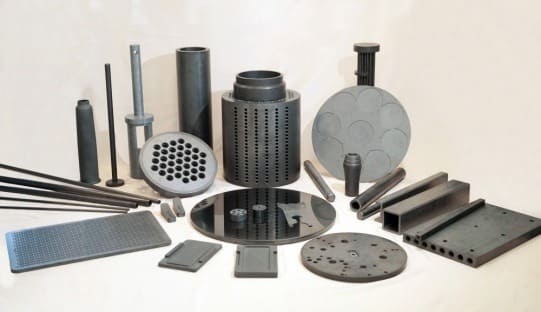Silicon Carbide Ceramics: Characteristics for Advanced Research
Introduction
Silicon carbide ceramics (SiC) are high-performance non-oxide ceramics renowned for their exceptional hardness, thermal properties, and chemical resilience. Available in variants such as Black SiC and Green SiC, these materials offer diverse characteristics that make them invaluable for advanced material science studies. This article explores the defining attributes of silicon carbide ceramics, supported by a comparative table, to underscore their role in cutting-edge research.
Characteristics of Silicon Carbide Ceramics
Silicon carbide ceramics possess a suite of attributes that position them as prime candidates for material science investigations. Below are their primary characteristics:
- Superior Hardness: Vickers hardness ranges from 22.0 GPa (Black SiC) to 23.0 GPa (Green SiC), ideal for studying wear-resistant materials.
- High Thermal Conductivity: Varies from 60 W/mK (Black SiC) to 200 W/mK (Green SiC), supporting research into thermal management.
- Electrical Insulation: Volume resistivity reaches >10¹⁸ ohm-cm (Green SiC), perfect for exploring insulating properties.
- Chemical Resilience: Minimal weight loss in corrosive environments (e.g., <0.00 mg/cm²/day in H₂SO₄ for Green SiC), suited for corrosion resistance studies.
- Stable Thermal Expansion: Low CTE of 3.7 × 10⁻⁶/°C ensures structural integrity under temperature changes.
Detailed Characteristics Table
The table below compares the properties of silicon carbide ceramics across Black SiC and Green SiC grades.
| Property | Black SiC | Green SiC |
| Main Characteristics | ||
| Color | Black | Green |
| Main Applications | Mechanical seals, corrosion-resistant parts | Mechanical seals, corrosion-resistant parts |
| Characteristics | High hardness, wear resistance, corrosion resistance, and insulation | High hardness, wear resistance, corrosion resistance, insulation |
| Mechanical Properties | ||
| Bulk Density (g/cm³) | 3.12 | 3.16 |
| Water Absorption (%) | 0 | 0 |
| Vickers Hardness (GPa) | 22.0 | 23.0 |
| Flexural Strength (MPa) | 540 | 450 |
| Young’s Modulus (GPa) | 430 | 440 |
| Poisson’s Ratio | 0.16 | 0.17 |
| Fracture Toughness (MPa m¹/²) | 4–5 | 2–3 |
| Thermal Properties | ||
| Thermal Conductivity (W/mK, 20°C) | 60 | 200 |
| Specific Heat Capacity (J/(kg·K) × 10³) | 0.67 | 0.67 |
| Thermal Shock Resistance (ΔT°C) | 400 | — |
| Coefficient of Thermal Expansion (×10⁻⁶/°C, 40–400°C) | 3.7 | 3.7 |
| Electrical Properties | ||
| Volume Resistivity (ohm-cm, 20°C) | >10⁵ | >10¹⁸ |
| Chemical Properties | ||
| Nitric Acid (60%) Weight Loss (mg/cm²/day) | 0.04 | <0.00 |
| Sulfuric Acid (95%) Weight Loss (mg/cm²/day) | 0.01 | <0.00 |
| Caustic Soda (30%) Weight Loss (mg/cm²/day) | <0.00 | <0.00 |
Table Notes:
- Mechanical Properties: Black SiC’s higher fracture toughness (4–5 MPa m¹/²) provides insights into crack propagation resistance.
- Thermal Properties: Green SiC’s elevated thermal conductivity (200 W/mK) is ideal for heat dissipation studies.
- Chemical Stability: Green SiC’s near-zero weight loss in acids (<0.00 mg/cm²/day) sets a standard for corrosion resistance research.
Conclusion
Silicon carbide ceramics, encompassing Black SiC and Green SiC variants, offer a robust set of characteristics for advanced material science research. Their exceptional hardness, thermal conductivity, and chemical resilience enable detailed studies into material behavior under diverse conditions.
Advanced Ceramics Hub is a leading manufacturer and supplier of high-quality silicon carbide ceramic products in the form of plates, sheets, rods, tubes, crucibles, substrates, and customized parts, offering customized solutions for various industrial and research applications.

